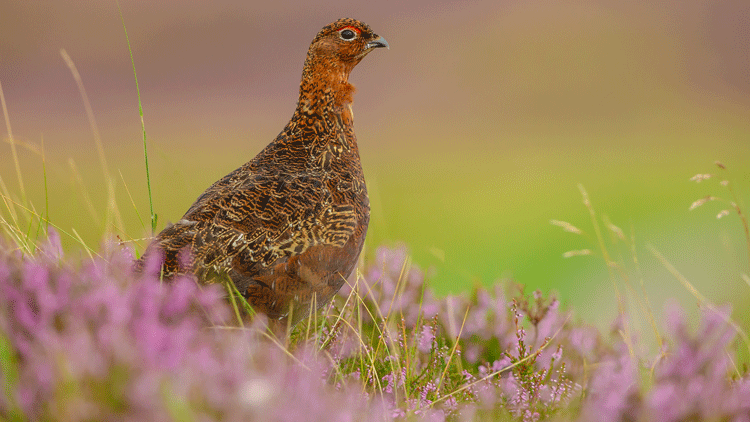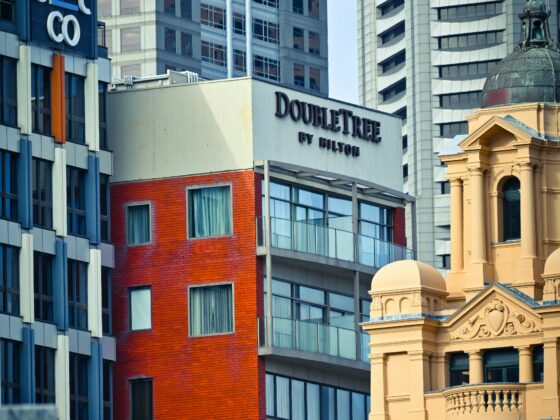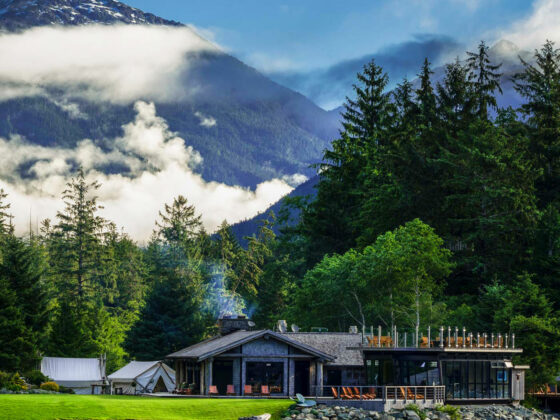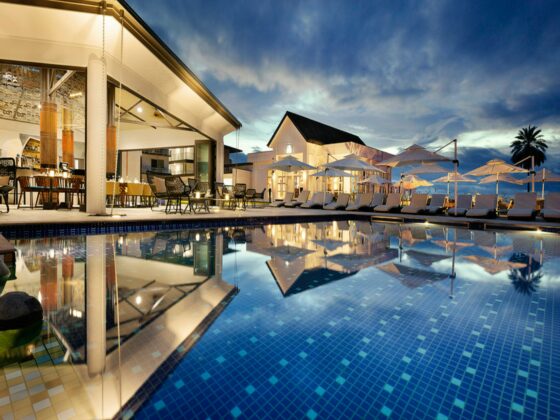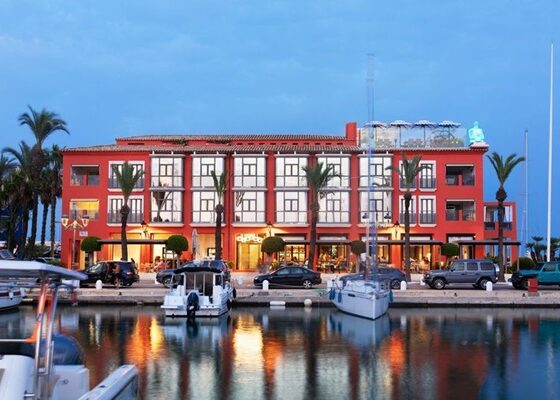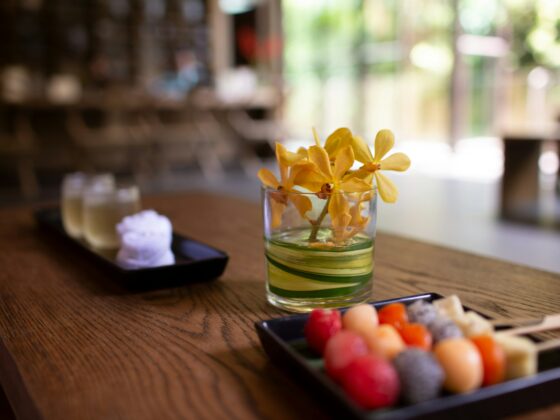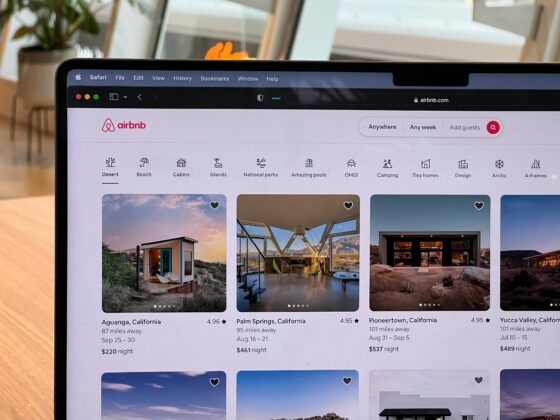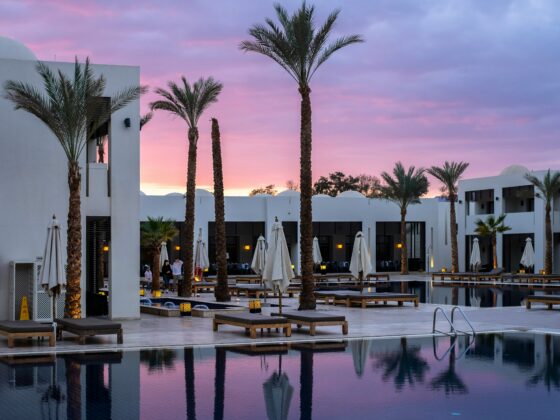The third season of HBO’s Emmy-winning series The White Lotus is currently filming on Koh Samui, a remote Thai island. When the location was announced, it was “a moment of celebration for us,” says Gopal Kumar, general manager of the Kamalaya Wellness Sanctuary Koh Samui, a local spa resort.
His excitement was understandable; the show has been a boon for tourism. The first season of the mystery, shot at the Four Seasons on Maui, led to a 386 percent increase in availability checks at the property. The second season drove tourists to Sicily. Sensing an opportunity, the Thai government heavily courted the show’s producers, offering them $4.4 million in tax incentives.
Destination promoters are calling it “The White Lotus Effect.” It’s part of a larger trend in tourism known as “set-jetting,” in which travelers pick a destination because a TV show or movie was shot there.
This isn’t new: Star Wars fans have been flocking to Death Valley (a.k.a. the planet Tatooine) since the 1970s, and New Zealand tourism estimates that one in five travelers visits because of theThe Lord of the Rings or The Hobbit.
“The exposure is product placement,” explains Simon Hudson, a tourism professor at the University of South Carolina. “Or destination placement.” But that compelling place you saw onscreen might look and feel a bit different in person. Here’s how to couch your cinematic expectations with on-the-ground reality.
Emily in Paris, Wednesday in Bucharest
Set-jetting has taken on a fevered pitch of late, Hudson reports, perhaps due to people binge-watching during COVID-19 lockdowns. Shows with memorable settings—Bridgerton, Emily in Paris, Squid Game—fed their wanderlust. “There was that pent-up demand for travel,” he says.
Expedia’s Unpack ’24 Study, a report on global travel trends, found that two-thirds of worldwide tourists considered visiting a place because they saw it on a small or big screen. Netflix’s Wednesday was credited with a 150 percent spike in searches for Romania; Viator currently offers multiple tours of Bucharest featuring locations used in the series. Even more revealing, 39 percent of travelers surveyed actually booked those trips. (This perhaps prompted the Washington Post to publish a proposed tour of Alberta, Canada, inspired by the apocalyptic HBO series The Last of Us, “minus the zombies.”)
Tourism promoters are even designing marketing plans around popular shows filmed or linked to their destinations. “There’s nothing else which can really offer that kind of platform to a global audience of potential travelers,” says Robin Johnson, global marketing director for Visit Britain. “You can go from a standing start to absolutely monumental interest.”
In fact, later this year Visit Britain will launch a marketing campaign, “Starring Great Britain,” to lure fans of shows like Ted Lasso, which shot in southwest London. After Castle Howard was featured on Bridgerton, the estate in North Yorkshire saw a 3,400 percent increase in visits to their website from the 18-to-24-year-old demographic.
(Travel to these six places if you love “Star Wars.”)
Separating fact from fiction
Do your research before leaving home, since set-jetters who arrive with certain expectations may be disappointed, Hudson says. He recalls fans of Captain Corelli’s Mandolin descending on Kefalonia, Greece, only to find the film’s sets had been dismantled. Notting Hill fans determined to enjoy the London park where Hugh Grant romanced Julia Roberts should plan accordingly, since the private Rosemead Garden is open to the public just once a year. Viewers who saw Poor Things and began plotting trips to Lisbon or Paris won’t find the film’s candy-colored landscapes: most scenes were shot in Budapest or on sound stages.
New Zealand’s government, by contrast, invested in Hobbiton, a theme park where visitors can tour the actual The Lord of the Rings sets two decades after the first film’s release. Devotees of The White Lotus who check into San Domenico Palace, Taormina, where season two was filmed, will find it much the same as the show, down to the staff uniforms and a bar manager who played a restaurant maître d’ on TV. Want to stay in Jennifer Coolidge’s room? Book the Royal Suite.
But even set-jetting destinations that deliver aren’t exact copies. At the San Domenico Palace, guests can’t just wander straight onto a sandy beach like Aubrey Plaza and Michael Imperioli seemingly did. The Italian hotel is perched on a cliff (hence the dramatic views), and while there’s a beach in Taormina, the one seen on screen is actually in Cefalù, 120 miles away on the northern coast of Sicily.
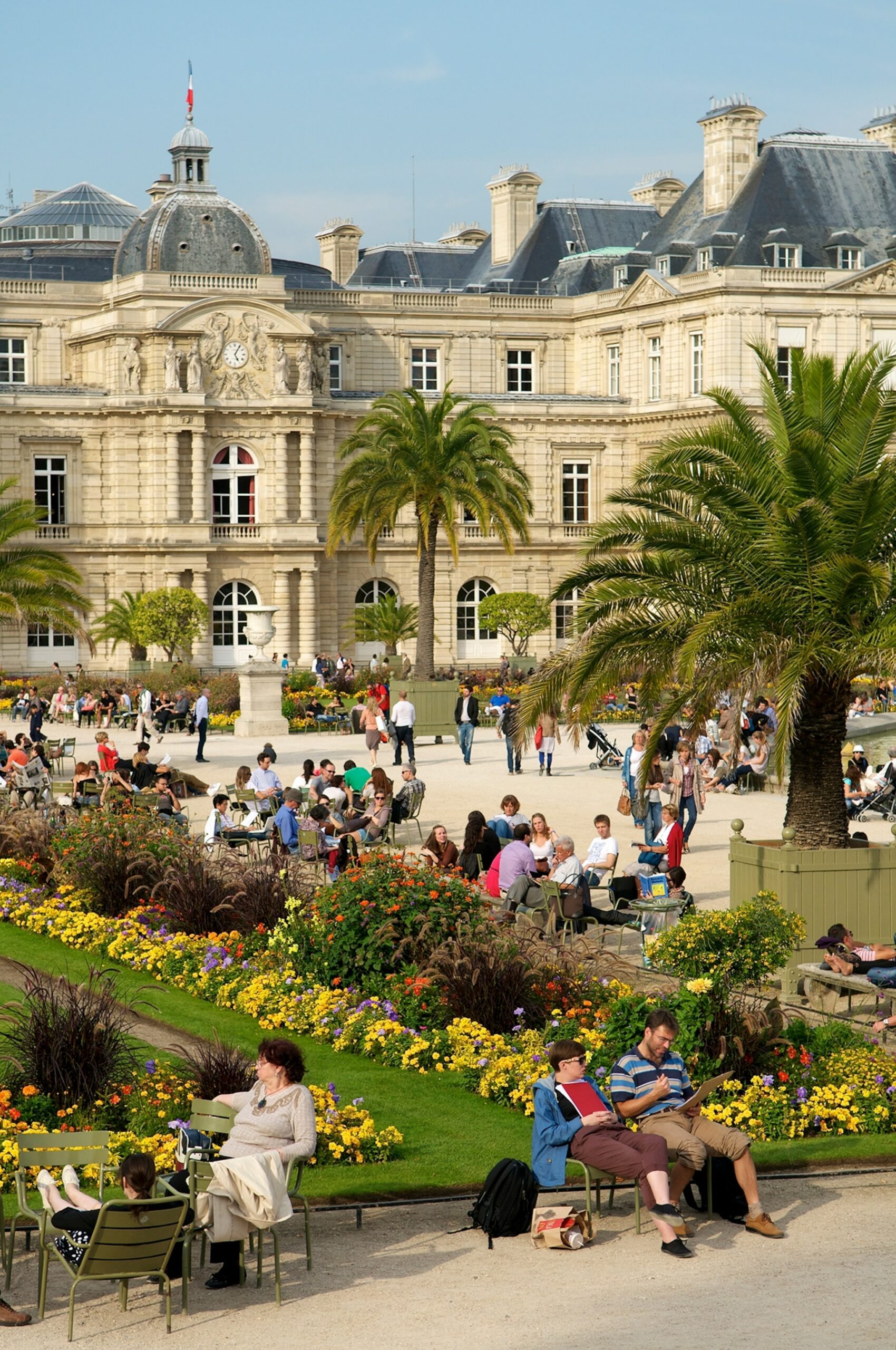
People lounge in Luxembourg Gardens, where several scenes from Emily in Paris were filmed. Photograph by KRISTA ROSSOW, NAT GEO IMAGE COLLECTION
Netflix’s Emily in Paris prominently features a neighborhood bistro called Les Deux Compères which specializes in Normandy cuisine. Fans regularly pose outside the restaurant, which in real life is called Terra Nera. But it’s Italian, not French. (The pub featured on Ted Lasso is a real place—The Prince’s Head in Richmond—but like Cheers in Boston, the interior was shot on a soundstage.)
In cases like these, set-jetters might benefit from consulting a travel agent. For fans of Emily in Paris, Virtuoso—an international network of high-end travel agents—tracked down the real chef from Normandy who consulted on the series, directing clients to Anona, his farm-to-table restaurant in Paris. James Bond aficionados can consult Black Tomato, which recently launched a customizable, luxe package with options like a London training session with Daniel Craig’s stunt double and a stop at a chateau in Champagne, France, to taste a rare La Grand Année vintage that Bond sipped in Casino Royale.
“There are websites dedicated to showing you exactly where places were filmed,” says a Virtuoso spokesperson, Misty Belles. “But getting access is another thing altogether.”
(Retrace Oppenheimer’s footsteps—and filming sites—around the U.S.)
How film sites combat overtourism
What if a flood of tourists ruins the very thing that captivated viewers in the first place? It’s a legitimate question the industry wrestles with. Thailand’s Maya Baya—which was featured prominently in Leonardo DiCaprio’s 2000 film The Beach—had to close to tourists for more than three years to stem the damage done to its coral reefs.
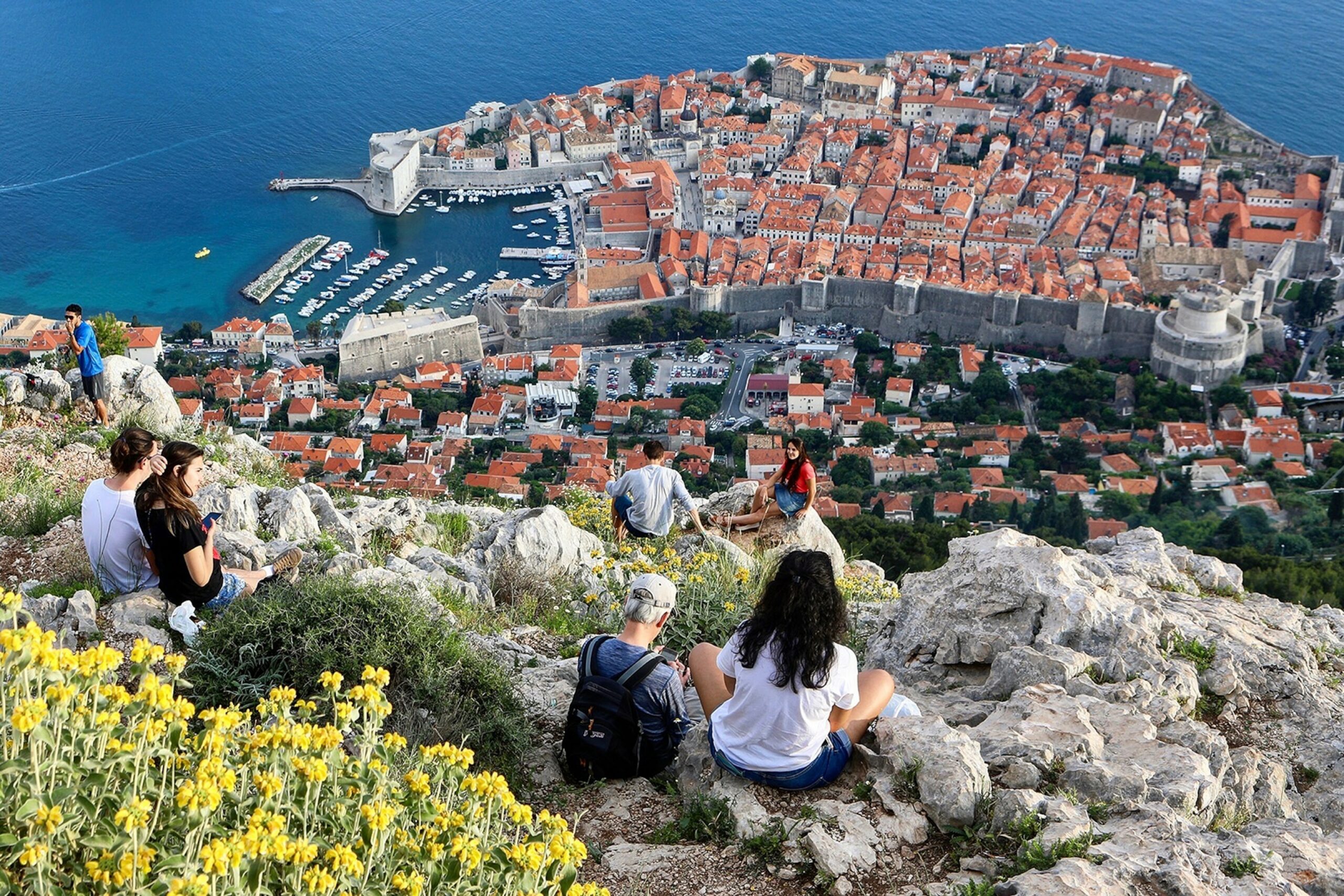
Tourists sit along the rocks of Mount Srd, admiring the panoramic view of Dubrovnik’s walled Old Town. The Croatian city has experienced an influx of visitors since many scenes from Game of Thrones were filmed there. Photograph by JILL SCHNEIDER, NAT GEO IMAGE COLLECTION
Dubrovnik experienced overcrowding in the wake of Game of Thrones. Croatia’s capital stood in for the show’s fictional King’s Landing and became such a popular destination that American Airlines added a direct flight from Philadelphia to Dubrovnik. The government welcomed the tourist dollars—$200 million from 2013 to 2018 by one estimate—but the influx of travelers put a strain on the city’s infrastructure and decency laws. (Thrones fans made headlines for stripping down naked and strolling through the center of town—an homage to one character’s infamous walk of shame.)
At one point, Dubrovnik’s Old City was so overrun it was in danger of losing its status as a UNESCO World Heritage site, forcing the mayor to limit the number of daily tourists. Perhaps fearing the same, the government of Svalbard, Norway, declined a request from Tom Cruise’s Mission Impossible: Dead Reckoning to film there.
Courting tourists while preserving local charm is a delicate balance. Visit Britain’s Robin Johnson suggests travelers be curious. The way he tells it, his office hopes to use shows like Poldark (shot in Cornwall), Peaky Blinders (Birmingham), and Bridgerton (Bath) as Trojan Horses. For example, come for Harry Potter’s Platform 9 and 3/4 at London’s King’s Cross Station, stay for a trip to a smaller city. “The film location,” he says, “is the hook to then tell the broader story.”
Expedia’s 2024 study predicted a spike in travel to Sydney, Australia—where the Mad Max prequel Furiosa—due out in May—was filmed. That report also cited interest in Surrey, England (thanks to HBO’s House of the Dragon), and Budapest (Dune: Part Two).
If the new FX series Shōgun has people excited about a trip to Japan, that’s understandable. But viewers should know: The show was shot entirely in Vancouver.
Mickey Rapkin is a Los Angeles-based writer.

